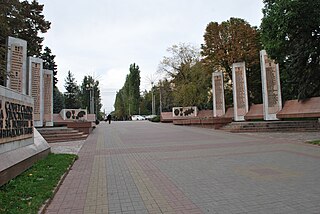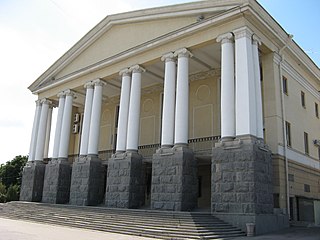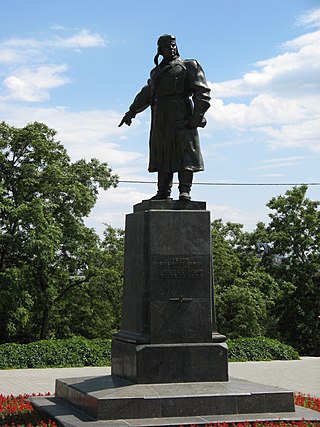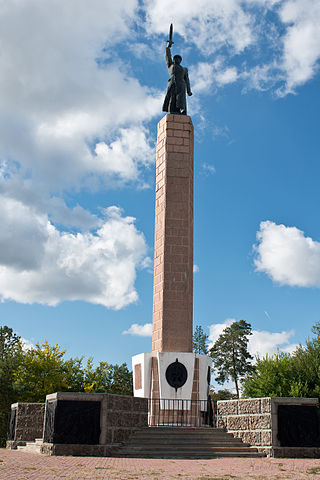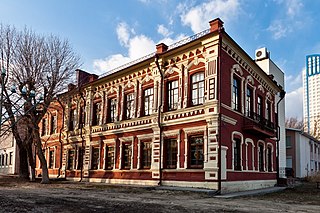Self-guided Sightseeing Tour #3 in Volgograd, Russia
Legend
Tour Facts
3.1 km
69 m
Experience Volgograd in Russia in a whole new way with our free self-guided sightseeing tour. This site not only offers you practical information and insider tips, but also a rich variety of activities and sights you shouldn't miss. Whether you love art and culture, want to explore historical sites or simply want to experience the vibrant atmosphere of a lively city - you'll find everything you need for your personal adventure here.
Individual Sights in VolgogradSight 1: Аллея Героев
Heroes Alley is a boulevard in the center of the hero city of Volgograd. It connects the embankment named after the 62nd Army and the Square of the Fallen Fighters, crossing Lenin Avenue, Sovetskaya and Chuikova streets.
Sight 2: Волгоградский музыкальный театр
Volgograd Musical Theater is the oldest musical theater on the Volga, the successor of the 2nd State Stalingrad Working Theater, the Stalingrad Regional Theater of Musical Comedy and the Volgograd Regional Theater of Musical Comedy;
Sight 3: Памятник Хользунову
The Monument to Kholzunov is a sculpture of the Hero of the Soviet Union Viktor Stepanovich Kholzunov, installed on the central embankment of the city of Volgograd. It is a cultural heritage site of federal significance and one of the few surviving pre-war monuments in the city.
Sight 4: А.С. Чуянов
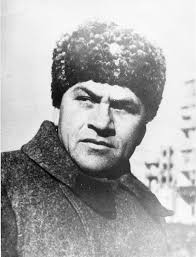
Aleksey Semenovich Chuyanov was a Soviet politician who served as the First Secretary of the Stalingrad Regional Committee of the Communist Party of the Soviet Union from 1938 to 1946.
Sight 5: Храм Иоанна Предтечи
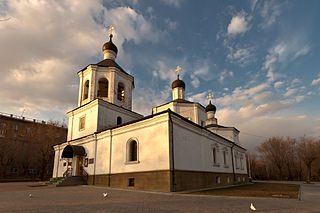
The Church of the Holy Prophet John the Baptist is the first church in the city of Tsaritsyn. On July 2, 1589, the construction of the Tsaritsyn fortress by the Cossacks began with the construction of a wooden church in the name of St. John the Baptist.
Sight 6: Памятник Чекистам
The Monument to the Soldiers of the 10th Division of the NKVD Troops and the Militiamen of Stalingrad - the defenders of the city in 1942-1943 or the Monument to the Chekists is a memorial in Volgograd, located on the right bank of the Tsaritsa River, near the Astrakhan Bridge, connecting the Central and Voroshilovsky districts of the city. Around the monument there is a square of Chekists with a small park area. Nearby is the metro tram station of the same name and public transport stops. It is a warrior figure with a drawn sword held high in his hand, located on a pedestal.
Sight 7: Школа-синагога
The Volgograd Synagogue, also known as the Beit David Synagogue in Volgograd, is an historic Jewish congregation and synagogue, located at 2 Balahinskaia Street, in the Voroshilovskiy District of the city of Volgograd, Russia. Completed in 1888 in the city then called Tsaritsyn, the synagogue was destroyed during the Battle of Stalingrad after the invasion of German forces, and rebuilt after World War II.
Share
How likely are you to recommend us?
Disclaimer Please be aware of your surroundings and do not enter private property. We are not liable for any damages that occur during the tours.
GPX-Download For navigation apps and GPS devices you can download the tour as a GPX file.
